The 75-60 is a two-component (mould) rubber that cures at (RTV) Room Temperature. This 75-60 is a easy-to-use rubber with a mixing ratio 1A:1B and a low viscosity 1200 cP. De Poly 75 series offers superior strength with a variety of Shore A 60 – Shore A90. Due to the very accurate reproduction and strength properties, the Poly 75 series and especially the 75-60 is perfect for making molds for pouring concrete, plaster, or other industrial applications and products. The Poly 74- / 75- serie products requires release agent like Pol-Ease 2300 or liquid release agent like VL or 2350 for making moulds or to release the rubber from the object. Our Syn B-32 is perfect to release conrete castings from the 75-Series.
The Poly 75-60 and Poly 75-59 are both the softest variant of the Poly 75 series. For softer polyurethane types, we have the Poly 74 series with, among others, the Poly 74-20, Poly 74-30 and Poly 74-45 materials. For harder materials we have polyurethane rubbers from the PT Flex series or the Poly 75-75 and Poly 75-90.
For releasing the polyurethane, release agent, for example Pol-Ease 2300, must be used or a release agent such as SYN B-32 when demoulding concrete casts.
In addition to the release agents, various additives are available for polyurethane rubbers. CAB-O-SIL is a thickening product for thickening the polyurethane cast rubber. This viscosity-increasing additive ensures that the rubber can be used for a spatula or brush mold. In addition to the thickener, we have various release agents, UV stabilizers, thinners and color pastes for coloring the rubber.
Packaging: Set 2 kg, Set 10 kg, Set 36 kg, Set 408 kg
Hardness (Shore A): 60
Mix Ratio: 1A:1B (by weight)
Color: Amber
Working Time (min): 10
Total Cure (hr): 16 hr (demold) / 7 days (100%)
Viscosity (cP): 1.200
Tear Strength (N/mm2): 18.04 (103 psi)
Tensile Strength (N/mm2): 3.76
Type product: Polyurethane rubber
Application: rubber mould and part production. Moulds for materials like concrete, plaster, epoxy and more.
UFI Poly 75 Series Part A: 6530-2076-600M-JJNA
UFI Poly 75-60 Part B: PH30-20YS-E00K-6WYK
Release & Adhesion
Polyurethane casting rubber such as the poly 75-70 adheres when casting on many surfaces such as various types of metal, wood, polyurethane, plastics, epoxy materials, concrete, plaster and many more other surfaces. If release is required on these substrates, release agents such as our Pol-Ease 2300, Lossingsmiddel VL, Pol-Ease 2350 and Pol-Ease 2450 or the other release agents must be used. We always advise to first do a test with the adhesion, release or the suction effect of the rubber on the mold or application. With porous parts made of, for example, wood or plaster, the rubber can be sucked up. You can prevent this by first sealing it with, for example, a pore sealer. This is not a release agent, so if it still needs to be released or is poured with a material that will give you adhesion, use a release agent.
As standard, a polyurethane does bond and silicone does not bond to different materials. This adhesion or no adhesion is not for every material. If you want to generate extra adhesion for, for example, (mechanical) load, we always recommend optimizing this by using an ashesive primer for the different substrates. This gives a good bond for both materials. Before using this adhesive, the surface must be thoroughly cleaned and degreased. Blasting or roughening the surface promotes adhesion with or without a bonding primer.
Casting polyurethane on a material with which no adhesion is created therefore does not require a release agent. Most silicone casting rubbers such as our siliconen Eurosil, Platsil (addition silicone) and SG C-sil (condensation silicone) do not bond with the polyurethane materials. So no separate means is required here. However, it is possible that when you use molds intensively, the releasing effect can become less. Then use the release agent before you start pouring.
Always make a test case before you get started.
ATTENTION!
Mandatory information according to Regulation (EU) 2020/1149 regarding diisocyanates:
From August 24, 2023, adequate training is required for industrial or professional use.
More information can be found at feica.eu/Puinfo and https://safeusediisocyanates.eu/
More information about working with Diisocyanates:
Safety Information:



Eye protection: Safety glasses. DIN EN 166.
Skin and body protection: Wear suitable protective clothing. EN 340
Gloves: Wear suitable gloves resistant to chemical penetration. Chemical resistant gloves (according to European standard NF ISO 374-1 or equivalent)
Material: Nitrile rubber (NBR)
Permeation: 5 (> 240 minutes)
Thickness (mm): 0.35
Standard: ISO 374-1
Respiratory protection: [In case of inadequate ventilation] wear respiratory protection. No special respiratory protection equipment is recommended under normal conditions of use with adequate ventilation. Provide sufficient air exchange and/or exhaust. Do not breathe gas/vapour/aerosol.
Device: Breathing apparatus
Filter type: P3
Condition: Vapour protection, Protection for Liquid particles.
Standard: EN 149.
COMP. A
Hazard pictograms (CLP):
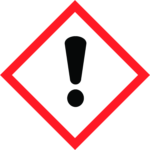
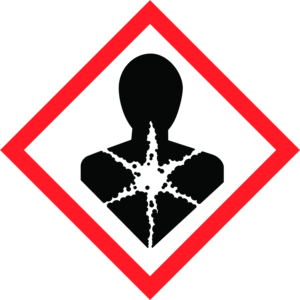
GHS07, GHS08
Signal word (CLP): Danger
Contains: Polyether polyol-TDI prepolymer; m-tolylidene diisocyanate; toluene-diisocyanate
85 – 90% Polyether polyol-TDI prepolymer, CAS-No.: 9057-91-4, EC-No.: 618-583-0. Skin Irrit. 2, H315
Eye Irrit. 2, H319, Resp. Sens. 1, H334, Skin Sens. 1, H317, STOT SE 3, H335.
≤ 2% m-tolylidene diisocyanate; toluene-diisocyanate (Note C), CAS-No.: 26471-62-5, EC-No.: 247-722-4, EC Index-No.: 615-006-00-4, REACH-no: 01-2119454791-34, Acute Tox. 1 (Inhalation:vapour), H330 (ATE=0.24 mg/l/4h), Skin Irrit. 2, H315 Eye Irrit. 2, H319, Resp. Sens. 1, H334, Skin Sens. 1, H317, Carc. 2, H351, STOT SE 3, H335, Aquatic Chronic 3, H412.
( 0.1 ≤C ≤ 100) Resp. Sens. 1, H334, m-tolylidene diisocyanate; toluene-diisocyanate, CAS-No.: 26471-62-5, EC-No.: 247-722-4, EC Index-No.: 615-006-00-4, REACH-no: 01-2119454791-34.
Hazard statements (CLP):
H315 – Causes skin irritation.
H317 – May cause an allergic skin reaction.
H319 – Causes serious eye irritation.
H332 – Harmful if inhaled.
H334 – May cause allergy or asthma symptoms or breathing difficulties if inhaled.
H351 – Suspected of causing cancer.
Precautionary statements (CLP):
P201 – Obtain special instructions before use.
P261 – Avoid breathing vapours, mist.
P280 – Wear protective gloves, eye protection, protective clothing.
P304+P340 – IF INHALED: Remove person to fresh air and keep comfortable for breathing.
P342+P311 – If experiencing respiratory symptoms: Call doctor, a POISON CENTER.
P501 – Dispose of contents and container to hazardous or special waste collection point, in accordance with local, regional, national and/or international regulation.
Extra phrases: As from 24 August 2023 adequate training is required before industrial or professional use.
COMP. B
Hazard pictograms (CLP):

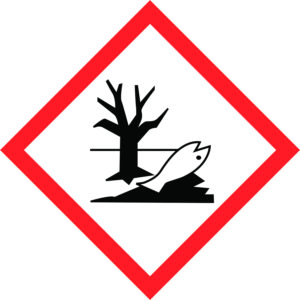
GHS08, GHS09
Signal word (CLP): Warning
Contains: diethylmethylbenzenediamine
<10% diethylmethylbenzenediamine (Note C), CAS-No.: 68479-98-1, EC-No.: 270-877-4, EC Index-No.: 612-130-00-0, REACH-no: 01-2119486805-25,
Acute Tox. 4 (Dermal), H312 (ATE=1100 mg/kg bodyweight) Acute Tox. 4 (Oral), H302 (ATE=738 mg/kg bodyweight) STOT RE 2, H373 Eye Irrit. 2, H319 Aquatic Acute 1, H400 Aquatic Chronic 1, H410.
Hazard statements (CLP):
H373 – May cause damage to organs (pancreas) through prolonged or repeated exposure.
H411 – Toxic to aquatic life with long lasting effects.
Precautionary statements (CLP):
P314 – Get medical advice/attention if you feel unwell.
P391 – Collect spillage.
P501 – Dispose of contents and container to hazardous or special waste collection point, in accordance with local, regional, national and/or international regulation.
Transport hazard Classes:
UN 3082, ENVIRONMENTALLY HAZARDOUS SUBSTANCE, LIQUID, N.O.S. (CONTAINS : diethylmethylbenzenediamine), 9, III, (-)
From: €31,00

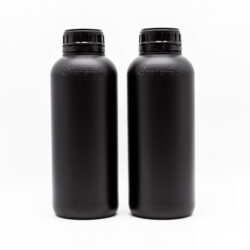
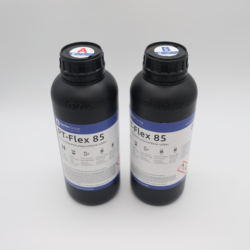
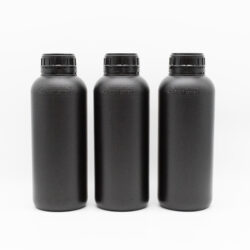
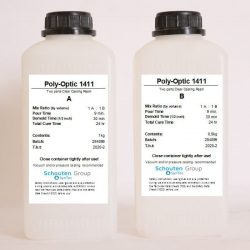
PolyTek
Eurosil
SG C-Sil
Platsil
Poly 74-, Poly 75- and Poly 81-series
PT Flex
EasyFlo
Poly-Optic
Zhermack
Asiga
DETAX
MoonRay
Pro3dure
Pol-Ease
Formech
syntecshop.com
Laan van Londen 140
3317 DA Dordrecht
Netherlands

© 2022 – syntecshop.com
Privacy and cookies | Terms and Conditions
All prices on syntecshop.com are exclusive of VAT.